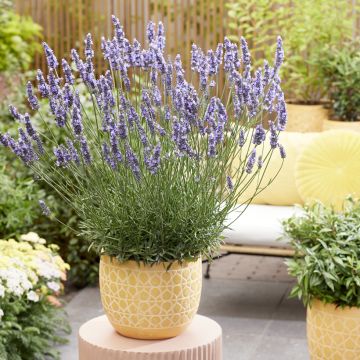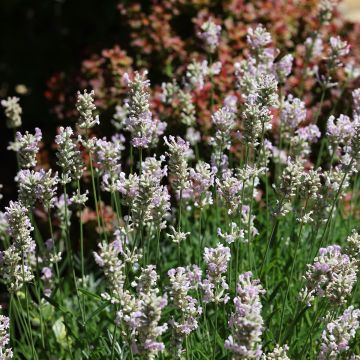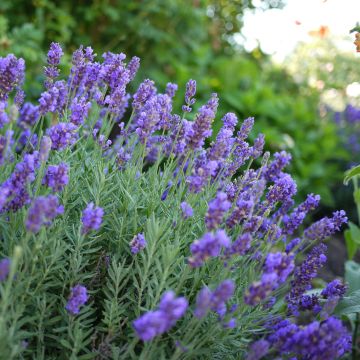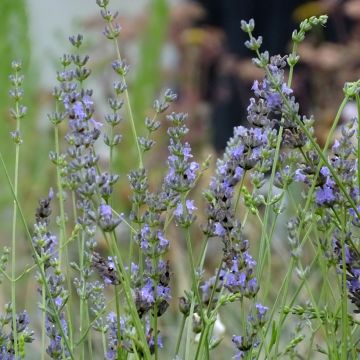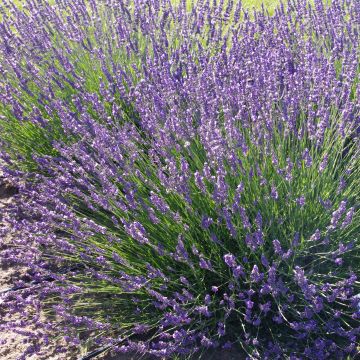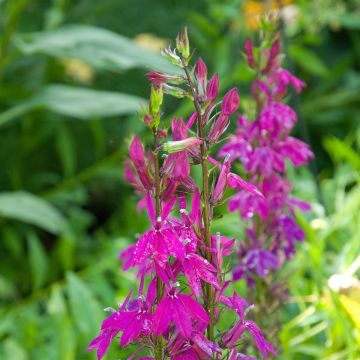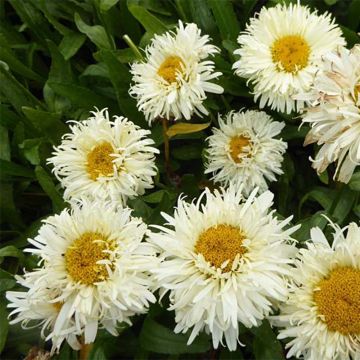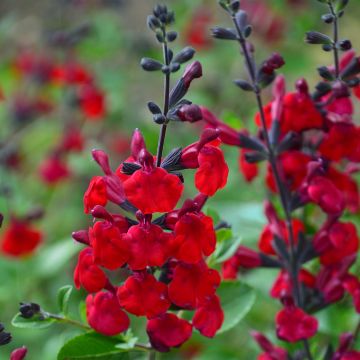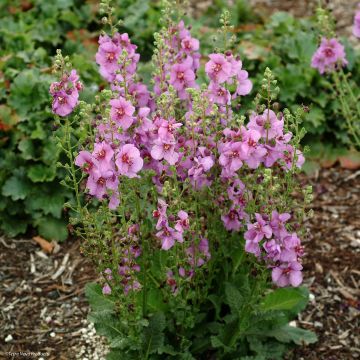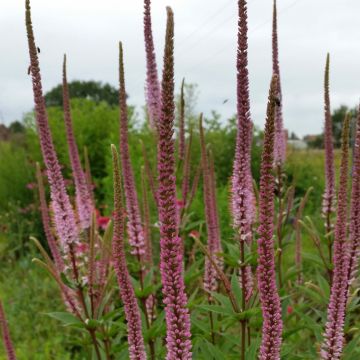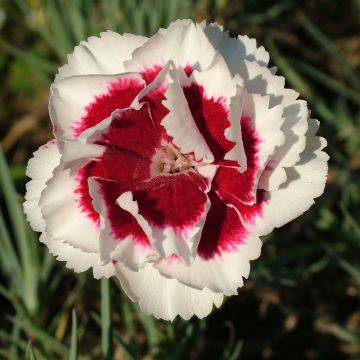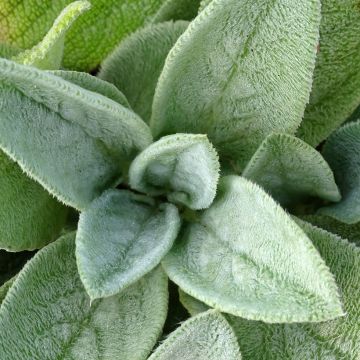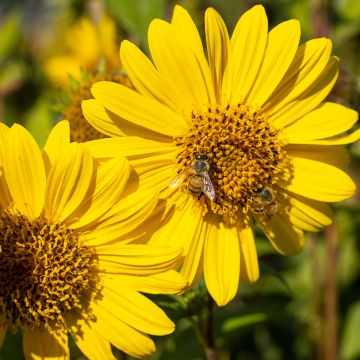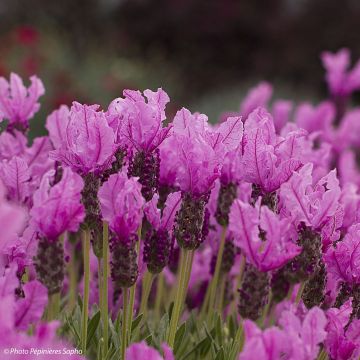Shipping country and language
Your country of residence may be:
Your country of residence is:
For a better user experience on our website, you can select:
Your shipping country:
-
Andorra
-
Austria
-
Belgium
-
Bulgaria
-
Canada
-
Chile
-
Croatia
-
Cyprus
-
Czechia
-
Denmark
-
Estonia
-
Finland
-
France
-
Germany
-
Greece
-
Hungary
-
Iceland
-
Ireland
-
Italy
-
Latvia
-
Lithuania
-
Luxembourg
-
Malta
-
Monaco
-
Netherlands
-
Poland
-
Portugal
-
Romania
-
Slovakia
-
Slovenia
-
Spain
-
Sweden
-
Switzerland
-
United Kingdom
We only deliver seed and bulb products to your country. If you add other products to your basket, they cannot be shipped.
Language:
-
French
-
German
-
Spanish
-
English
-
Italian
My Account
Hello
My wish lists
Log in / Register
Existing customer?
New customer?
Create an account to track your orders, access our customer service and, if you wish, make the most of our upcoming offers.
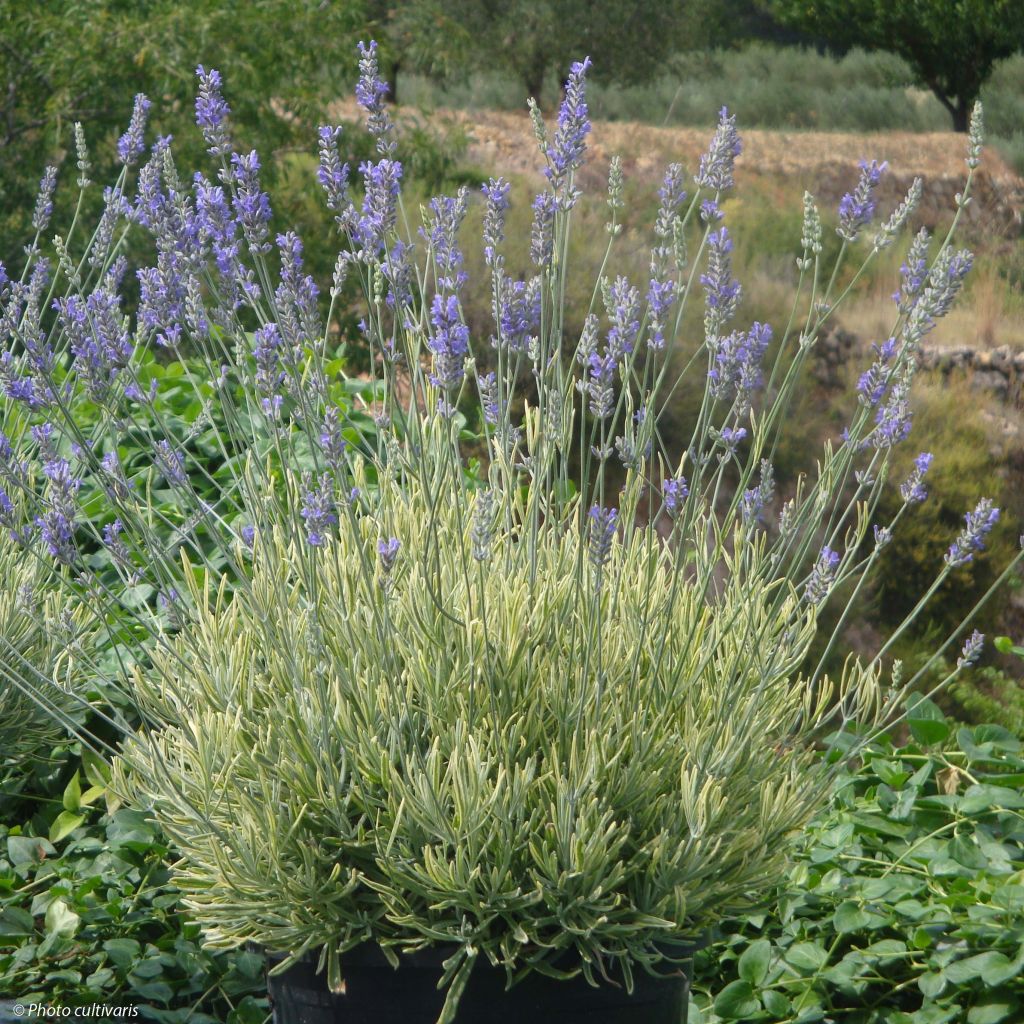

Lavandula intermedia Platinum Blonde - Lavandin
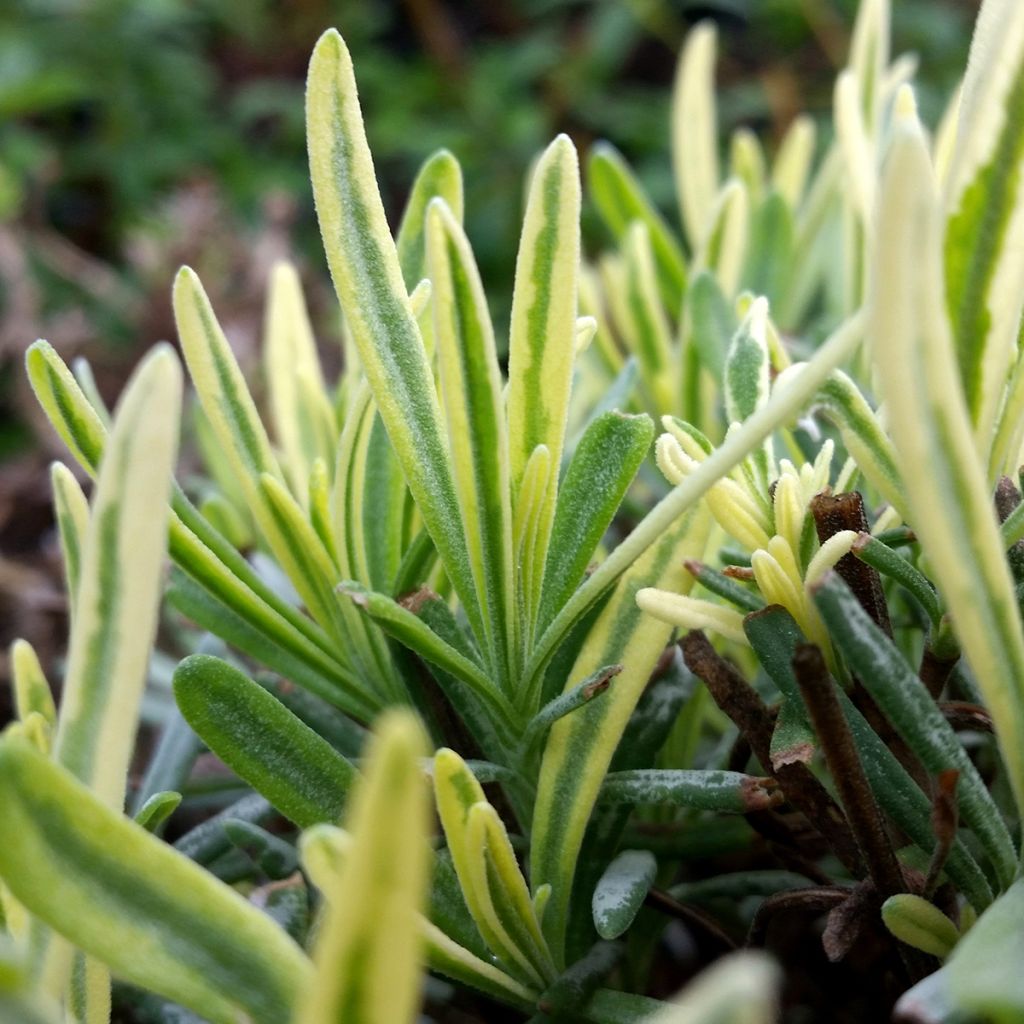

Lavandula intermedia Platinum Blonde - Lavandin
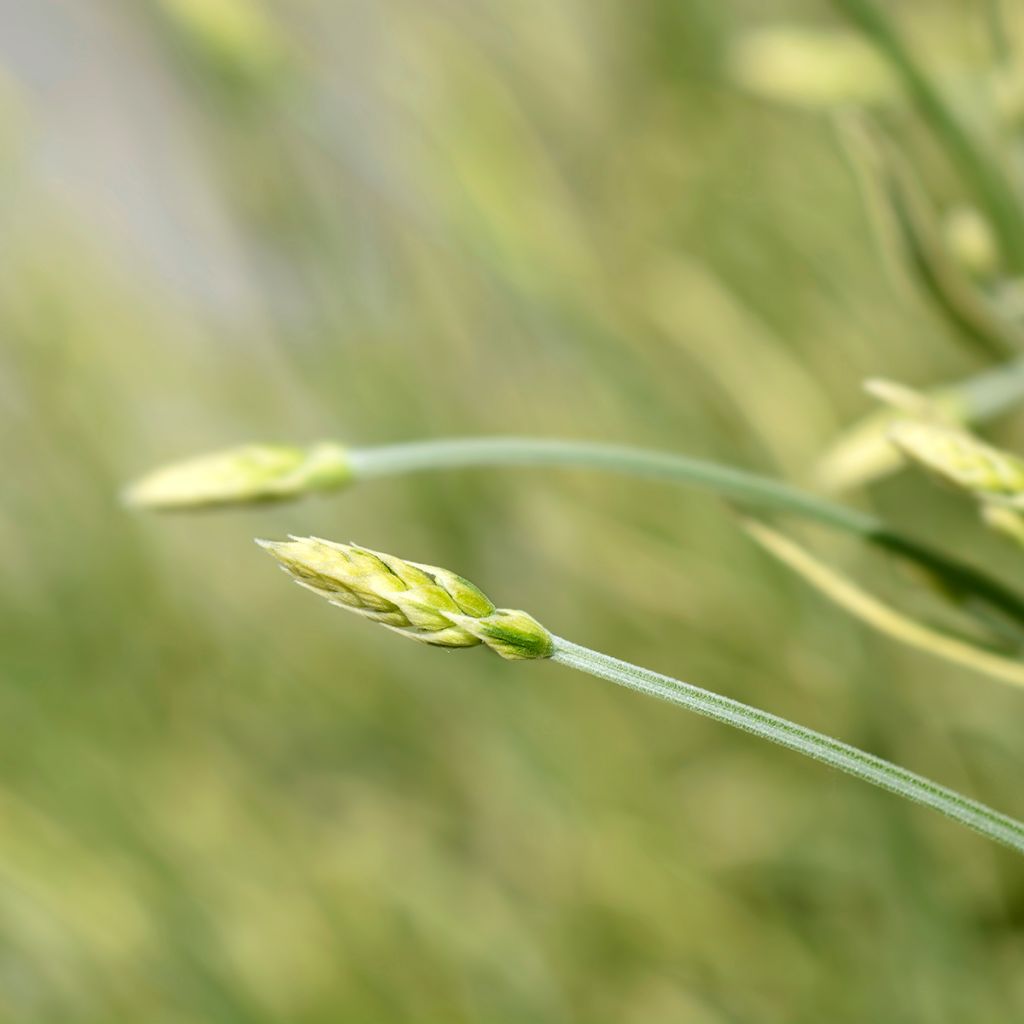

Lavandula intermedia Platinum Blonde - Lavandin
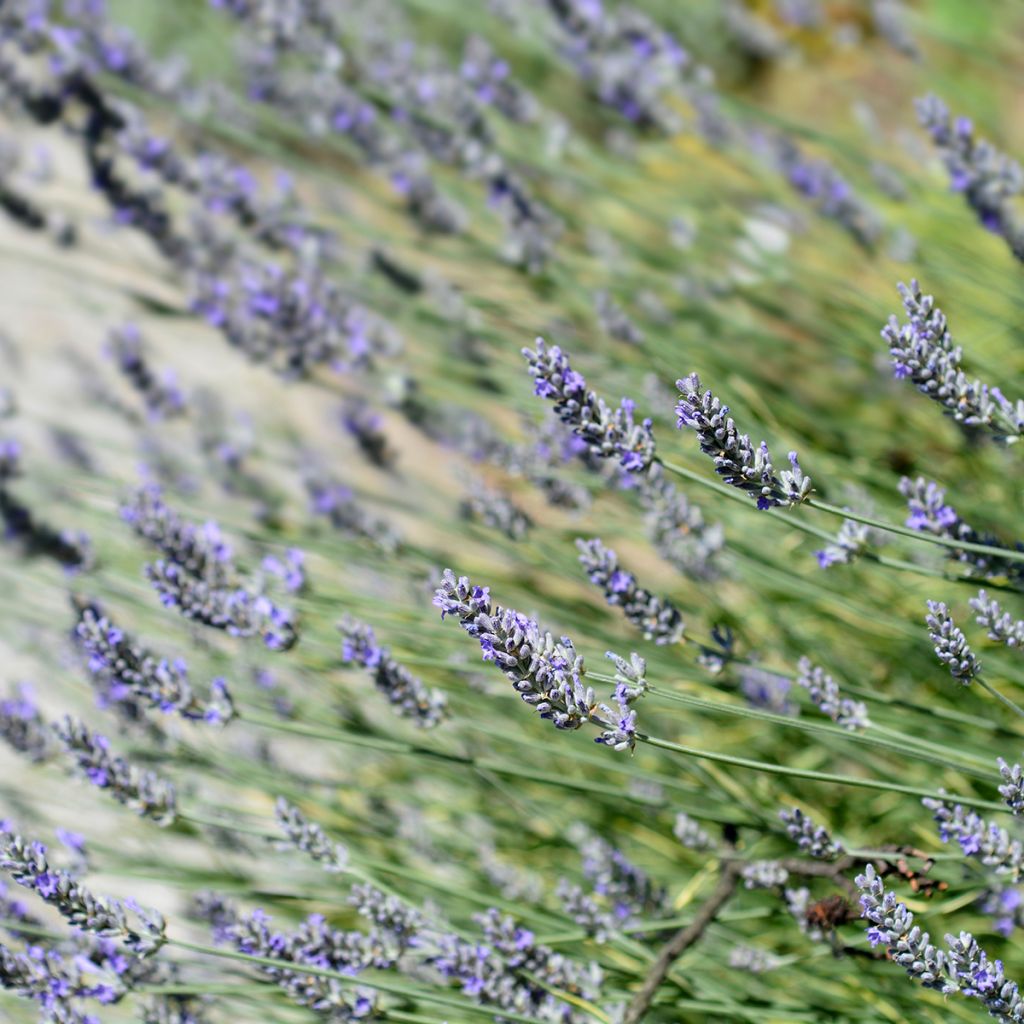

Lavandula intermedia Platinum Blonde - Lavandin
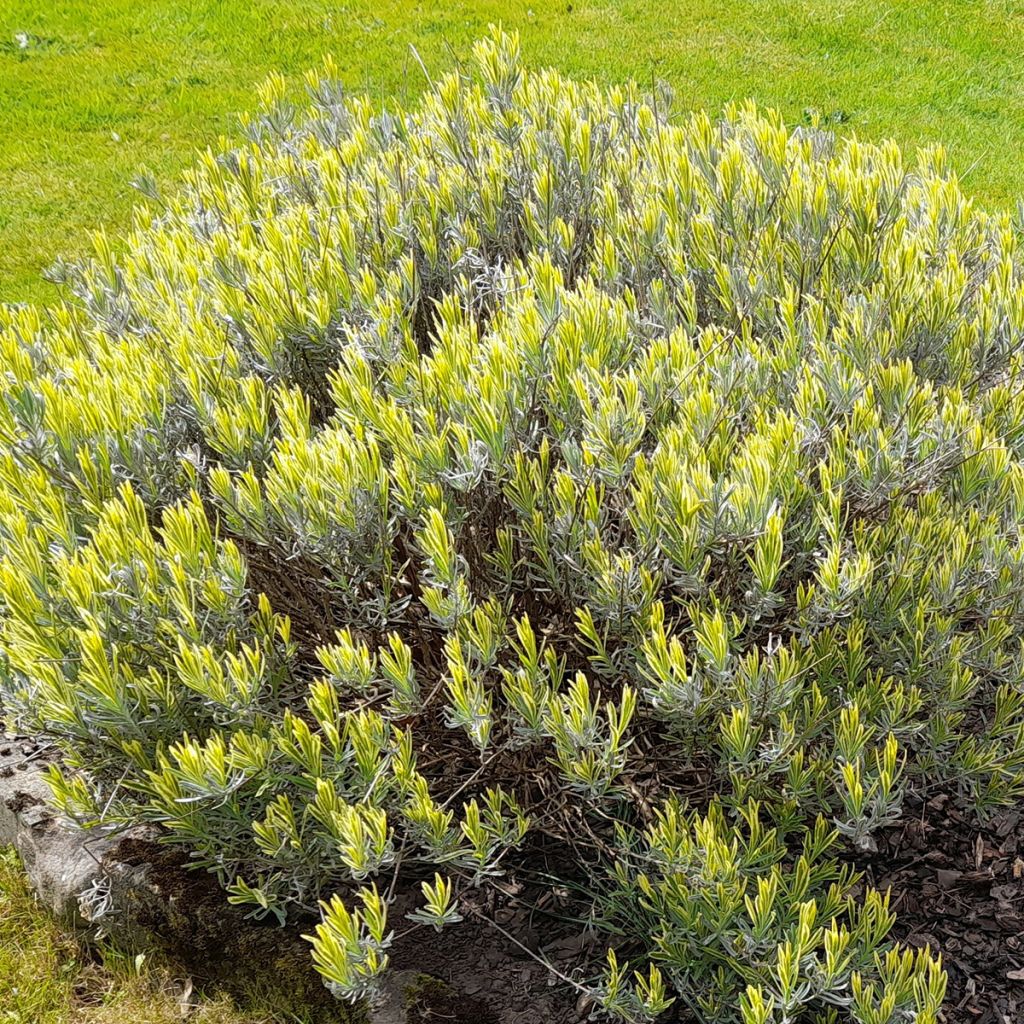

Lavandula intermedia Platinum Blonde - Lavandin
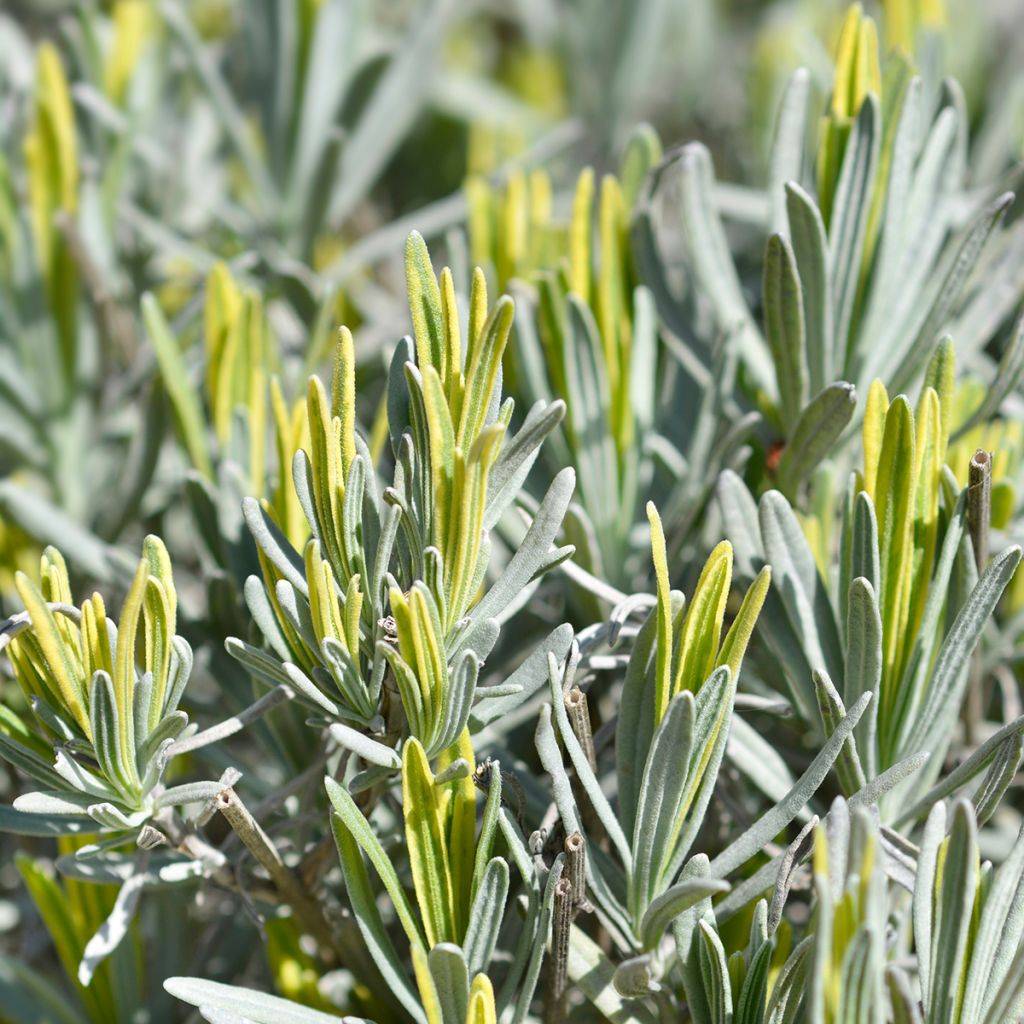

Lavandula intermedia Platinum Blonde - Lavandin
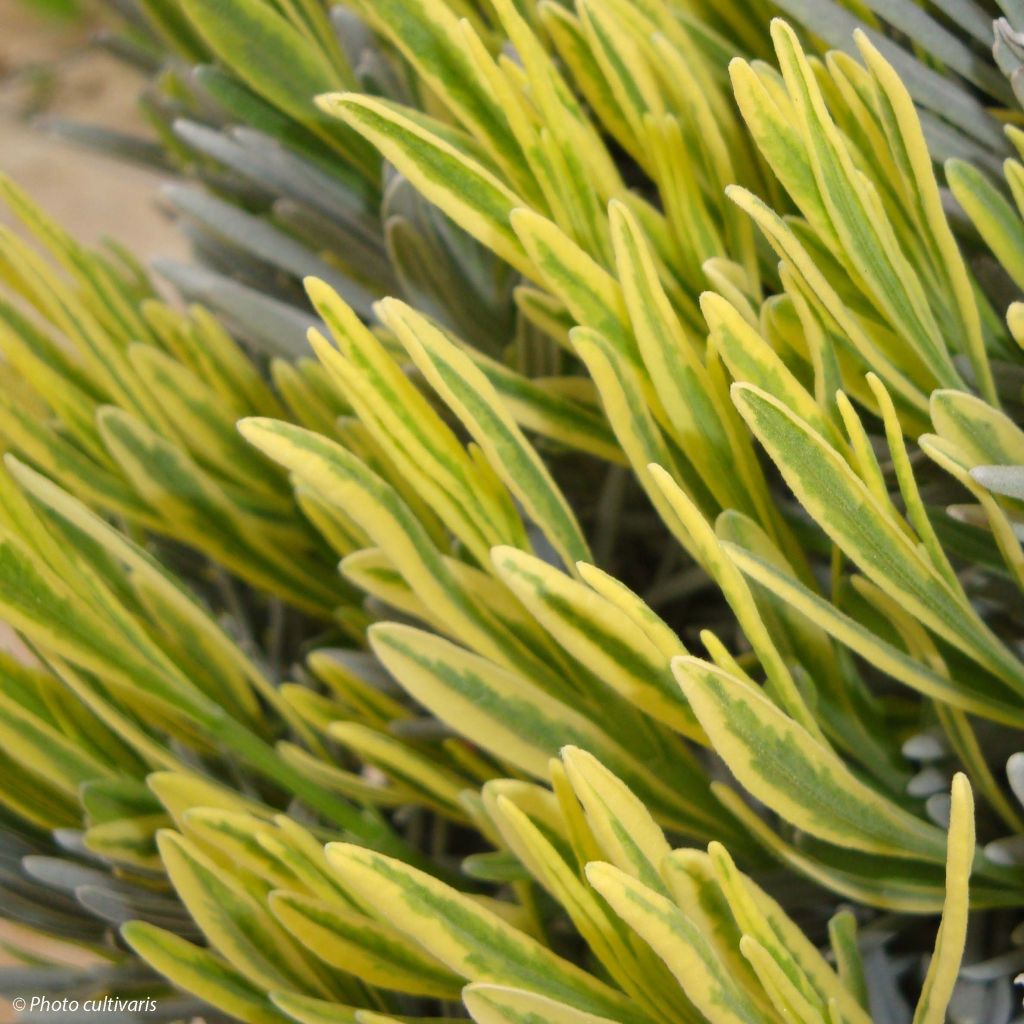

Lavandula intermedia Platinum Blonde - Lavandin
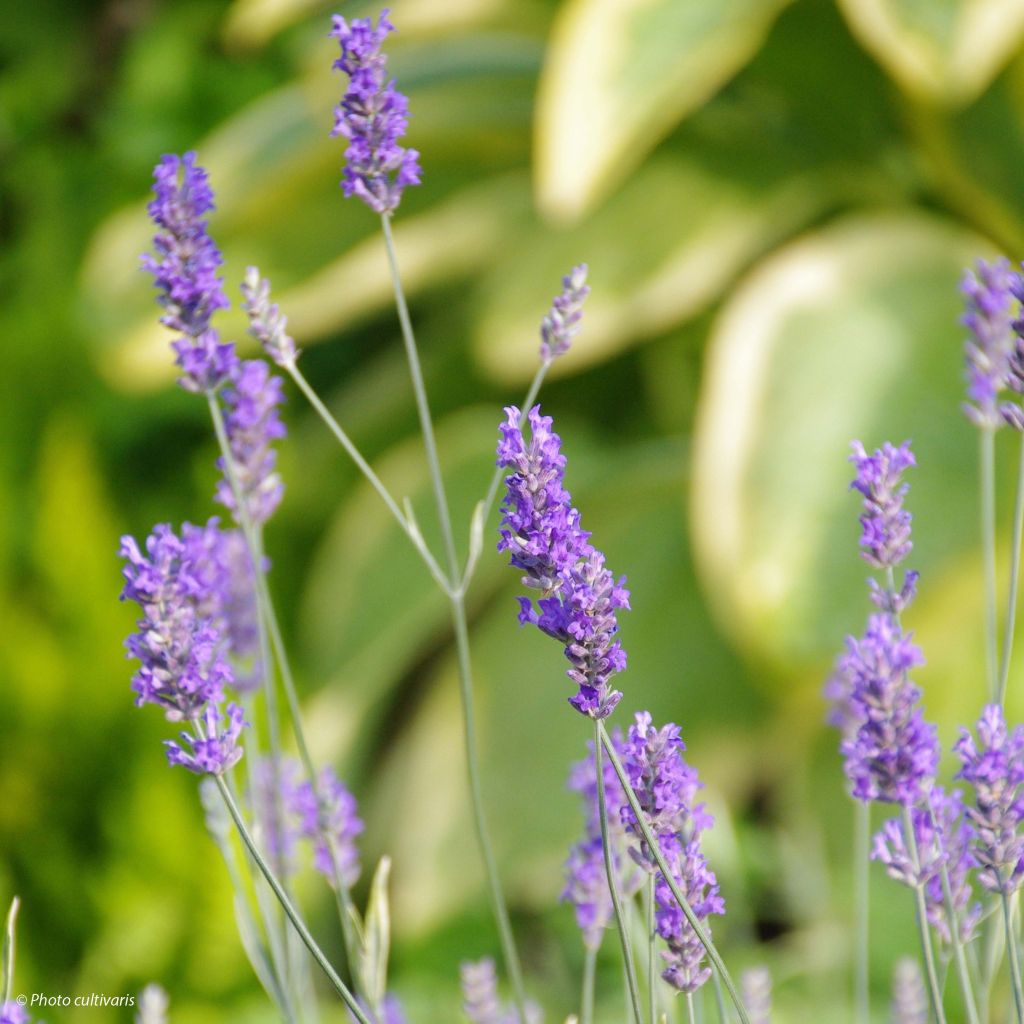

Lavandula intermedia Platinum Blonde - Lavandin
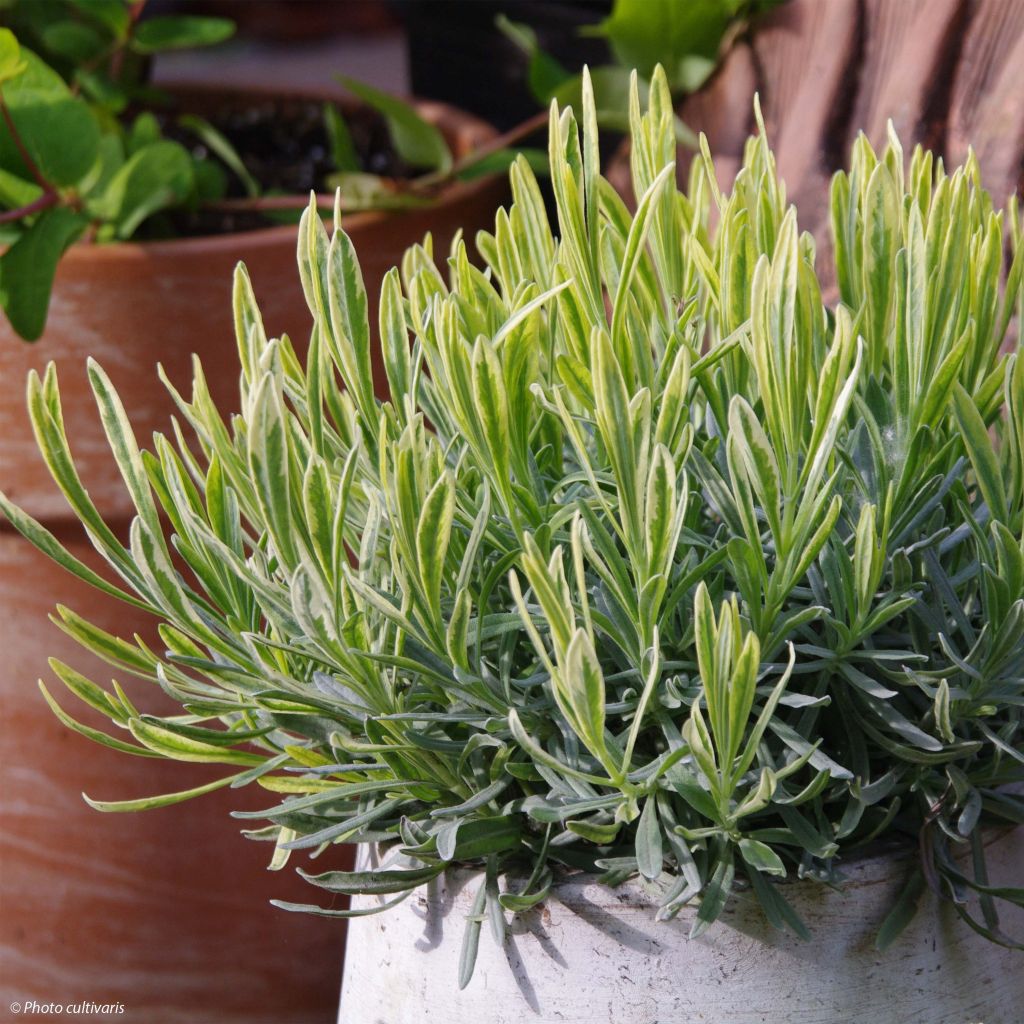

Lavandula intermedia Platinum Blonde - Lavandin
Lavandula intermedia Platinum Blonde - Lavandin
Lavandula x intermedia Platinum Blonde 'Momparler'
Lavandin, Dutch Lavender
Plants received in good condition, planted as soon as they arrived, can already see signs of recovery. To be followed next spring.
pascal, 06/10/2024
Order in the next for dispatch today!
Dispatch by letter from €3.90.
Delivery charge from €5.90 Oversize package delivery charge from €6.90.
More information
This item is not available in your country.
Schedule delivery date,
and select date in basket
This plant carries a 12 months recovery warranty
More information
We guarantee the quality of our plants for a full growing cycle, and will replace at our expense any plant that fails to recover under normal climatic and planting conditions.
From €5.90 for pickup delivery and €6.90 for home delivery
Express home delivery from €8.90.
From €5.90 for pickup delivery and €6.90 for home delivery
Express home delivery from €8.90.
From €5.90 for pickup delivery and €6.90 for home delivery
Express home delivery from €8.90.

Does this plant fit my garden?
Set up your Plantfit profile →
Description
The Lavandula 'Platinum Blonde' is a variety of hybrid lavender of modest but robust size, which is distinguished by unique variegated foliage, very bright, and highly aromatic. Its small leaves, a velvety grey-green, gradually variegate with cream and silver, making the plant a small ball of light, especially in spring with the new shoots. Its summer flowering, an elegant light blue, sometimes extends until November. A beautiful novelty for flower pots, rock gardens, or a dry garden.
The genus Lavandula belongs to the family Lamiaceae. This very recent hybrid, called lavandin, is obtained by cross-breeding L. angustifolia and L. latifolia. These two species are found in the wild in the same mountainous environment, and naturally cross-breed. They have given rise to numerous cultivars, all easy to install in the garden, tolerating limestone well and being very healthy. The hybrid 'Platinum Blonde' forms a pretty, round cushion, with dense vegetation, reaching 70 cm (28in) in flower, 50 cm (20in) for the foliage, and a diameter of 50 cm (20in). Its evergreen leaves, wider and more rounded than those of other species and varieties, grey-green when young, are quickly invaded by cream and light yellow variegations. The color of the foliage is very stable, even more pronounced when the soil is dry and the climate is warm. However, in cool climates, what the plant gains in foliage and robustness, it loses in color and fragrance intensity. This variety offers a rather late and long summer flowering. Long, thin, leafy stems emerge well above the foliage ball, bearing long spikes of a light and vibrant blue-violet, very honey-scented.
This 'Platinum Blonde' lavender is hardy, but like most other lavenders, it needs to be planted in full sun in a very well-draining soil (even rocky) soil, on a slope or in a rock garden. In sunny and warm locations, its variegated foliage will be more vibrant and its flowers will exude an intense fragrance. An ornamental and Mediterranean plant par excellence, lavender can be used in flower beds, as a standalone plant, in borders, rock gardens, flower pots, by the seaside, and even as a low flowering hedge.
You can associate 'Platinum Blonde' lavender with grasses like Stipa pennata or Stipa tenuifolia, which, with their tousled appearance, will contrast with its rounded shape and create a harmonious association often found in nature. It will also work wonders when paired with evening primroses, perennial flax, astragalus, euphorbias, or dark-colored shrubs such as dwarf conifers, strawberry trees, landscape roses, and photinias. It pairs well with Iris germanica, daylilies, and a small Provençal bindweed called Convolvulus althaeoides. You can also create beautiful flower pots to place on the terrace or balcony. It is also possible to mix several varieties of lavender together, creating an elegant display with a variety of flower and foliage colors, as well as plant sizes and volumes.
Properties: The nectar of its flowers attracts bees, which produce one of the most renowned honeys. In Provence, the plant is distilled to obtain a highly sought-after essential oil in perfumery and aromatherapy. Its numerous therapeutic virtues are still widely used: its essential oil has antiseptic, antispasmodic, healing, purifying, diuretic properties, and more.
Report an error about the product description
Lavandula intermedia Platinum Blonde - Lavandin in pictures
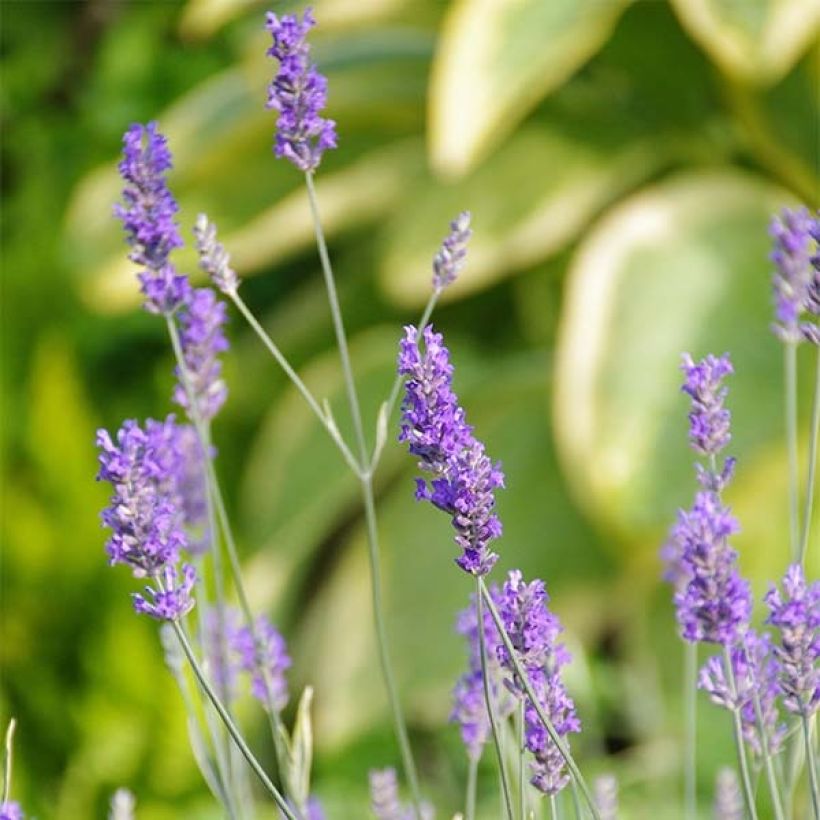

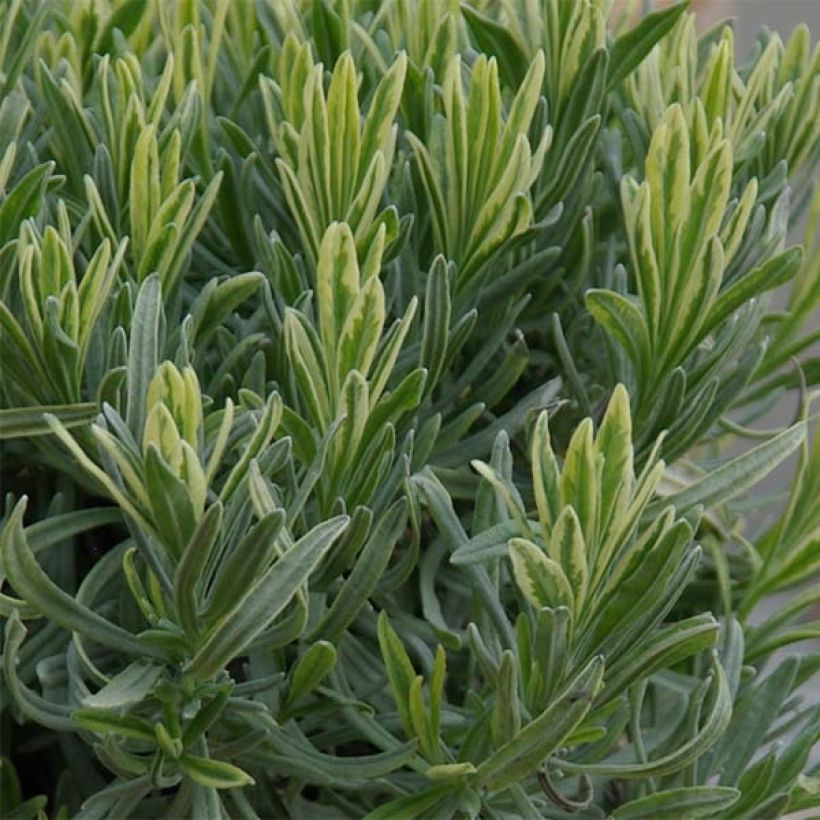

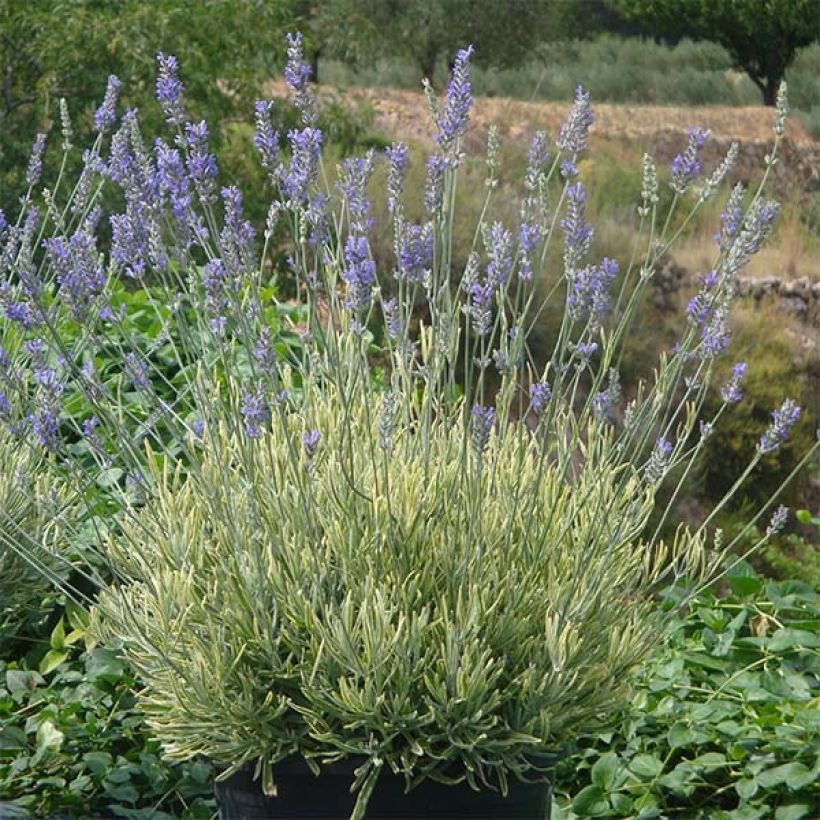

Flowering
Foliage
Plant habit
Botanical data
Lavandula
x intermedia
Platinum Blonde 'Momparler'
Lamiaceae
Lavandin, Dutch Lavender
Cultivar or hybrid
Other Lavandin
Planting and care
In nature, lavenders and lavandins always live in poor and stony, dry, perfectly drained environments. These plants hate summer watering, which makes them sick and disappear, as they are very sensitive to fungal diseases induced by the combination of heat and humidity. In winter, they absolutely need perfect drainage, and in summer, they need to be kept dry. Lavender will age better in poor soil, as its growth will be slower, and it will have less tendency to thin out at the base. To limit this phenomenon, pruning should be done from a young age, after flowering or in autumn, just above the first buds that can be seen on the wood. Lavenders and lavandins never regrow on old wood. The clump will thus branch out more and more, remaining compact, eventually forming beautiful round and dense cushions. At planting, give them what they love: gravel, stones, coarse sand, but definitely no potting compost or fertilizer.
.
Planting period
Intended location
Care
-
, onOrder confirmed
Reply from on Promesse de fleurs
Summer flowering perennials
Haven't found what you were looking for?
Hardiness is the lowest winter temperature a plant can endure without suffering serious damage or even dying. However, hardiness is affected by location (a sheltered area, such as a patio), protection (winter cover) and soil type (hardiness is improved by well-drained soil).

Photo Sharing Terms & Conditions
In order to encourage gardeners to interact and share their experiences, Promesse de fleurs offers various media enabling content to be uploaded onto its Site - in particular via the ‘Photo sharing’ module.
The User agrees to refrain from:
- Posting any content that is illegal, prejudicial, insulting, racist, inciteful to hatred, revisionist, contrary to public decency, that infringes on privacy or on the privacy rights of third parties, in particular the publicity rights of persons and goods, intellectual property rights, or the right to privacy.
- Submitting content on behalf of a third party;
- Impersonate the identity of a third party and/or publish any personal information about a third party;
In general, the User undertakes to refrain from any unethical behaviour.
All Content (in particular text, comments, files, images, photos, videos, creative works, etc.), which may be subject to property or intellectual property rights, image or other private rights, shall remain the property of the User, subject to the limited rights granted by the terms of the licence granted by Promesse de fleurs as stated below. Users are at liberty to publish or not to publish such Content on the Site, notably via the ‘Photo Sharing’ facility, and accept that this Content shall be made public and freely accessible, notably on the Internet.
Users further acknowledge, undertake to have ,and guarantee that they hold all necessary rights and permissions to publish such material on the Site, in particular with regard to the legislation in force pertaining to any privacy, property, intellectual property, image, or contractual rights, or rights of any other nature. By publishing such Content on the Site, Users acknowledge accepting full liability as publishers of the Content within the meaning of the law, and grant Promesse de fleurs, free of charge, an inclusive, worldwide licence for the said Content for the entire duration of its publication, including all reproduction, representation, up/downloading, displaying, performing, transmission, and storage rights.
Users also grant permission for their name to be linked to the Content and accept that this link may not always be made available.
By engaging in posting material, Users consent to their Content becoming automatically accessible on the Internet, in particular on other sites and/or blogs and/or web pages of the Promesse de fleurs site, including in particular social pages and the Promesse de fleurs catalogue.
Users may secure the removal of entrusted content free of charge by issuing a simple request via our contact form.
The flowering period indicated on our website applies to countries and regions located in USDA zone 8 (France, the United Kingdom, Ireland, the Netherlands, etc.)
It will vary according to where you live:
- In zones 9 to 10 (Italy, Spain, Greece, etc.), flowering will occur about 2 to 4 weeks earlier.
- In zones 6 to 7 (Germany, Poland, Slovenia, and lower mountainous regions), flowering will be delayed by 2 to 3 weeks.
- In zone 5 (Central Europe, Scandinavia), blooming will be delayed by 3 to 5 weeks.
In temperate climates, pruning of spring-flowering shrubs (forsythia, spireas, etc.) should be done just after flowering.
Pruning of summer-flowering shrubs (Indian Lilac, Perovskia, etc.) can be done in winter or spring.
In cold regions as well as with frost-sensitive plants, avoid pruning too early when severe frosts may still occur.
The planting period indicated on our website applies to countries and regions located in USDA zone 8 (France, United Kingdom, Ireland, Netherlands).
It will vary according to where you live:
- In Mediterranean zones (Marseille, Madrid, Milan, etc.), autumn and winter are the best planting periods.
- In continental zones (Strasbourg, Munich, Vienna, etc.), delay planting by 2 to 3 weeks in spring and bring it forward by 2 to 4 weeks in autumn.
- In mountainous regions (the Alps, Pyrenees, Carpathians, etc.), it is best to plant in late spring (May-June) or late summer (August-September).
The harvesting period indicated on our website applies to countries and regions in USDA zone 8 (France, England, Ireland, the Netherlands).
In colder areas (Scandinavia, Poland, Austria...) fruit and vegetable harvests are likely to be delayed by 3-4 weeks.
In warmer areas (Italy, Spain, Greece, etc.), harvesting will probably take place earlier, depending on weather conditions.
The sowing periods indicated on our website apply to countries and regions within USDA Zone 8 (France, UK, Ireland, Netherlands).
In colder areas (Scandinavia, Poland, Austria...), delay any outdoor sowing by 3-4 weeks, or sow under glass.
In warmer climes (Italy, Spain, Greece, etc.), bring outdoor sowing forward by a few weeks.
